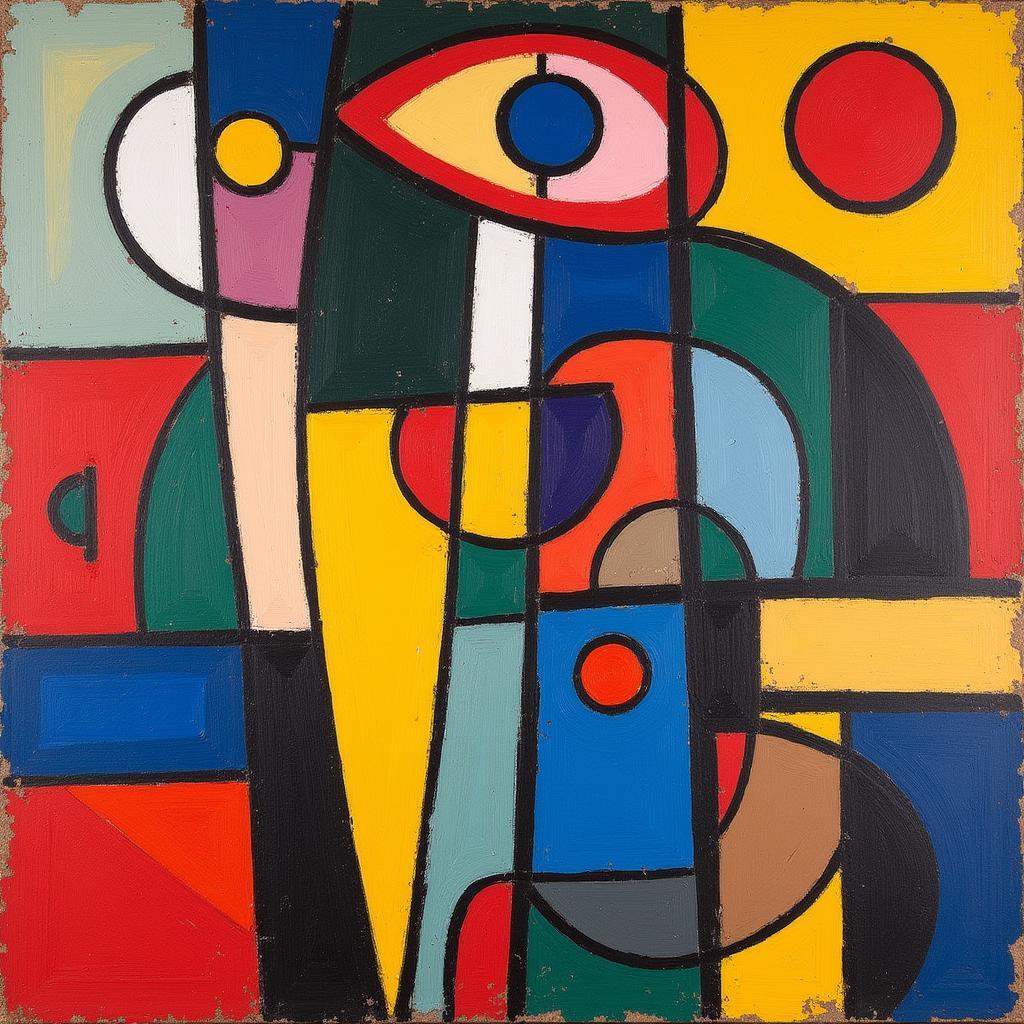Art Since 1900: Exploring Modernism, Antimodernism, and Postmodernism
Art since 1900 has been a whirlwind of evolving styles, philosophies, and reactions. This journey, marked by modernism, antimodernism, and postmodernism, reveals a fascinating interplay of artistic innovation and cultural critique. From the radical abstractions of early modernists to the ironic detachment of postmodernism, art in this period reflects the complex and often contradictory currents of the 20th and 21st centuries. Understanding these movements is crucial to grasping the trajectory of art and its continuing evolution.
Modernism: A Break from Tradition
Modernism, emerging in the late 19th and early 20th centuries, represented a radical break from traditional artistic conventions. Artists challenged established norms of representation, embracing experimentation and abstraction. Think of Picasso’s fragmented figures or Kandinsky’s vibrant, non-representational canvases. These artists sought to capture the essence of the modern experience, characterized by rapid technological advancement, urbanization, and a growing sense of alienation. Modernism wasn’t just about aesthetics; it was a philosophical shift, reflecting a belief in progress, innovation, and the power of art to shape society. Key figures like Matisse, Mondrian, and Brancusi pushed the boundaries of painting and sculpture, creating works that were both visually stunning and intellectually stimulating. They sought new ways of seeing and expressing, rejecting the constraints of the past.
 Kandinsky's Abstract Painting: Exploring Modernism
Kandinsky's Abstract Painting: Exploring Modernism
Modernism encompassed various movements, including Cubism, Futurism, Surrealism, and Abstract Expressionism. Each explored unique artistic possibilities, from the geometric explorations of Cubism to the dreamlike landscapes of Surrealism. These movements shared a common thread: a desire to break free from the past and create a new artistic language for the modern age. They questioned the very nature of art, its purpose, and its relationship to the viewer.
Antimodernism: A Reaction and a Reclamation
While modernism celebrated progress and innovation, antimodernism emerged as a reaction against what some perceived as its excesses. Antimodernists often felt that modernism had become detached from human experience, too focused on abstraction and intellectualism at the expense of emotion and tradition. They sought to reclaim the values of the past, emphasizing craftsmanship, beauty, and spiritual meaning. This led to a revival of traditional forms and styles, often infused with religious or nationalistic themes.
Think of the Arts and Crafts movement, with its focus on handcrafted objects and traditional design principles. Or consider the resurgence of interest in classical architecture and figurative painting. Antimodernism wasn’t simply a rejection of the new; it was an attempt to find a balance between the old and the new, to integrate the best of both worlds.
Postmodernism: Embracing Irony and Pluralism
Emerging in the latter half of the 20th century, postmodernism can be seen as both a continuation and a critique of modernism. Postmodern artists embraced irony, appropriation, and a playful mixing of high and low culture. Think of Andy Warhol’s pop art images or the eclectic assemblages of Robert Rauschenberg. Postmodernism questioned the very notion of originality and artistic genius, embracing the idea of art as a social construct.
Postmodernism challenged the grand narratives of modernism, embracing pluralism and a multiplicity of perspectives. It recognized the fragmented nature of contemporary experience, reflecting the influence of mass media, globalization, and the increasing blurring of boundaries between different cultures and artistic disciplines. Artists like Cindy Sherman and Barbara Kruger explored issues of identity, representation, and the power of images in a media-saturated world.
 Warhol's Pop Art: Exploring Postmodernism
Warhol's Pop Art: Exploring Postmodernism
Art Since 1900: A Continuing Dialogue
Art since 1900, shaped by modernism, antimodernism, and postmodernism, continues to evolve. These movements, while distinct, are intertwined in a complex dialogue. Understanding their characteristics, influences, and interrelationships provides a framework for appreciating the richness and complexity of contemporary art. From the groundbreaking innovations of early modernism to the playful subversions of postmodernism, art reflects the ongoing evolution of our cultural landscape.
Conclusion
The trajectory of art since 1900, marked by modernism, antimodernism, and postmodernism, offers a fascinating lens through which to view the cultural, social, and intellectual shifts of the past century. By understanding these movements, we gain a deeper appreciation for the dynamic interplay of tradition and innovation, rebellion and reflection that continues to shape the art world today. Want to explore these movements further? Dive into our Online Art workshops and unlock your creative potential!
FAQ
- What is the main difference between modernism and postmodernism? Modernism sought to break from tradition and embrace new forms, while postmodernism often incorporates and reinterprets elements from the past, embracing irony and pluralism.
- What are some key characteristics of antimodernism? Antimodernism often emphasizes traditional values, craftsmanship, and a rejection of the perceived excesses of modernism.
- Who are some prominent modernist artists? Pablo Picasso, Wassily Kandinsky, Henri Matisse, Piet Mondrian, and Constantin Brancusi are just a few examples.
- How did postmodernism challenge traditional notions of art? Postmodernism questioned ideas of originality and artistic genius, embracing appropriation and the blurring of high and low culture.
- What is the legacy of these movements in contemporary art? Contemporary art continues to engage with the legacies of modernism, antimodernism, and postmodernism, often blending and reimagining their ideas in new and exciting ways.
- Where can I learn more about these art movements? Explore our website for more articles, resources, and online workshops dedicated to art history and creative practice.
- How can I develop my own artistic style in relation to these movements? Our online workshops provide expert guidance and practical exercises to help you explore different artistic approaches and develop your unique voice.
Related Questions
- What are some examples of antimodernist architecture?
- How did World War I influence modernist art?
- What are the key themes explored in postmodernist literature?
- How has technology impacted art since 1900?
- Explore the influence of feminism on postmodernist art.
Need support? Contact us 24/7: Phone: 02462573573, Email: danteum@gmail.com, or visit us at Savico Megamall, 7-9 Đ. Nguyễn Văn Linh, Gia Thụy, Long Biên, Hà Nội 10000, Việt Nam.

